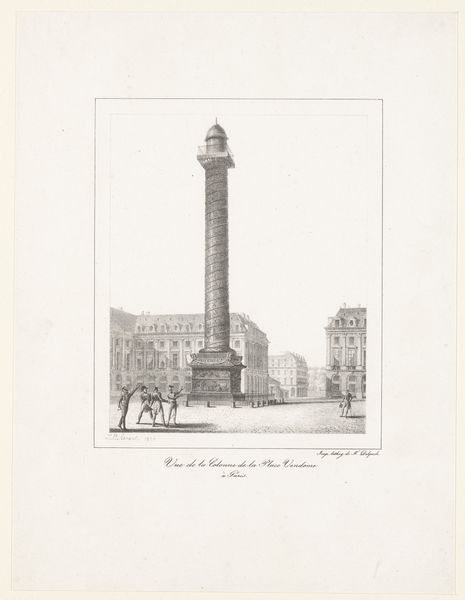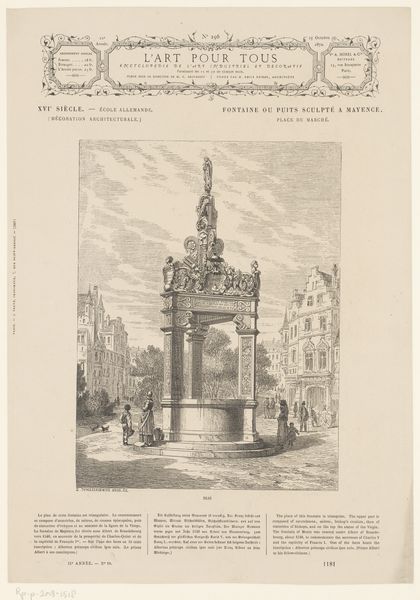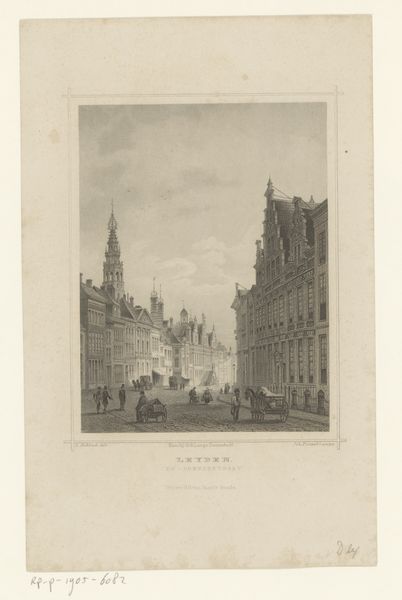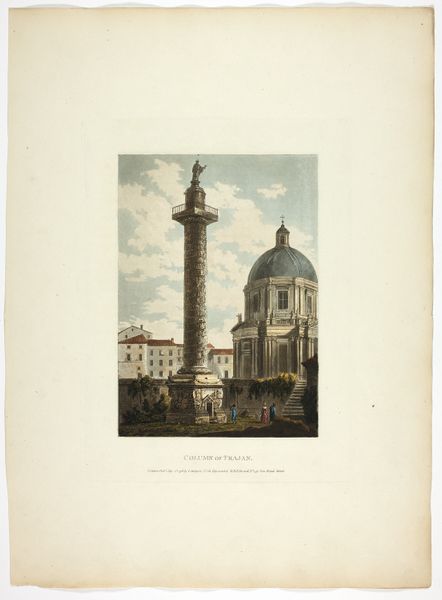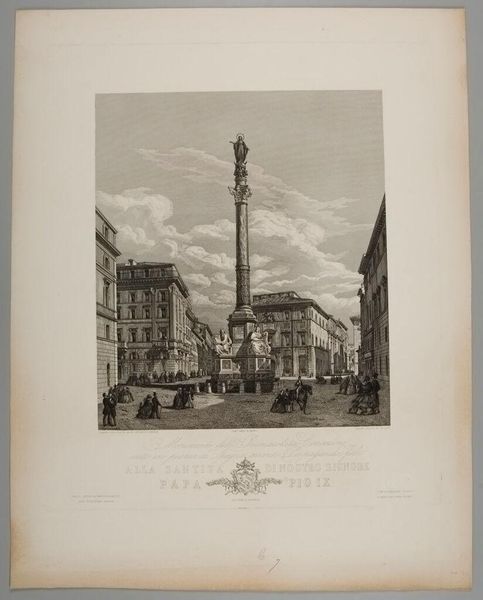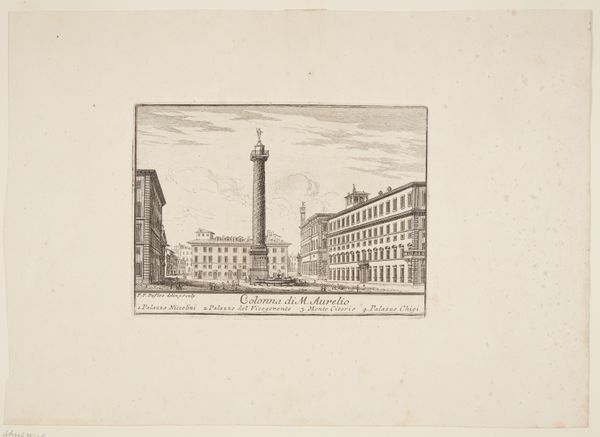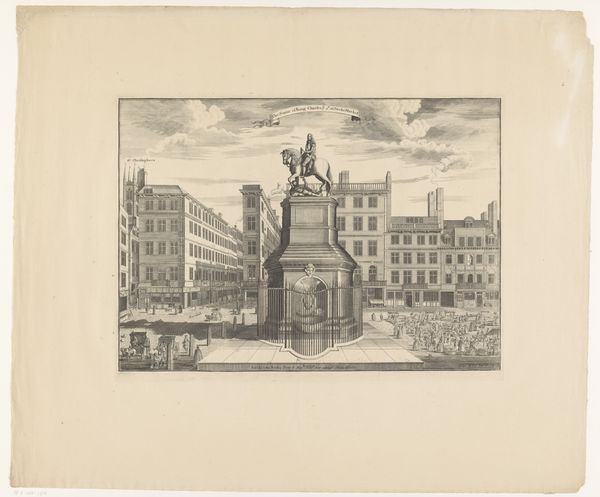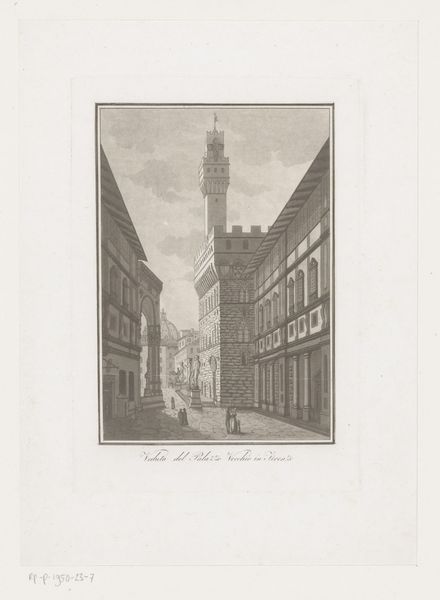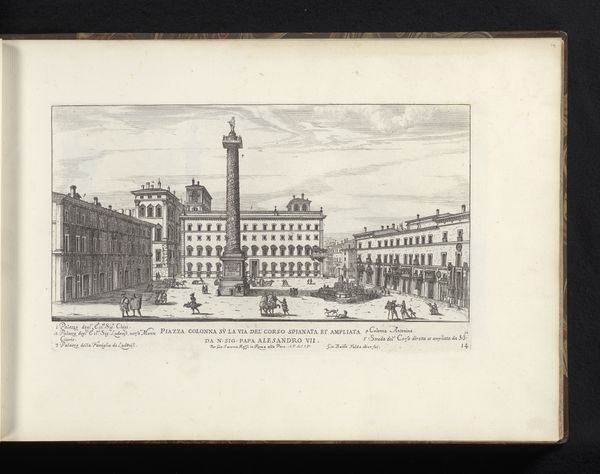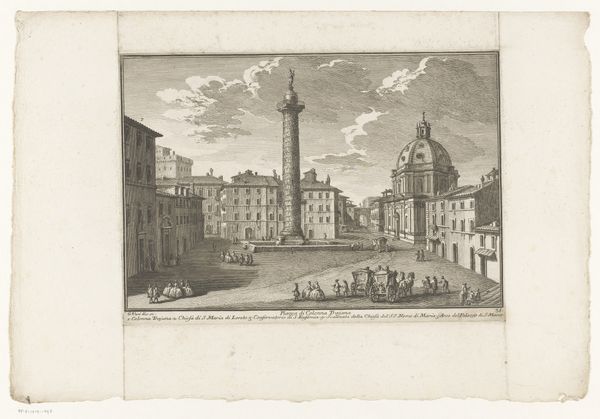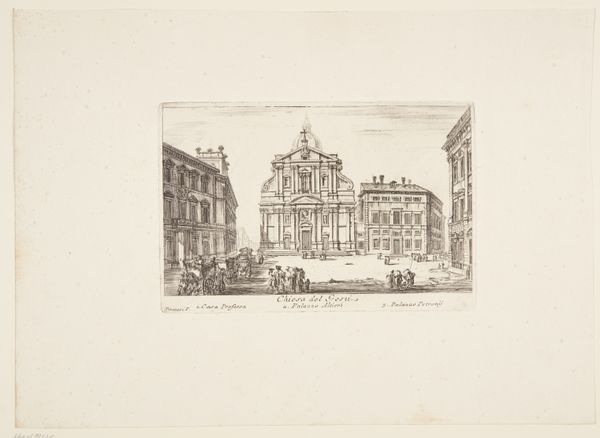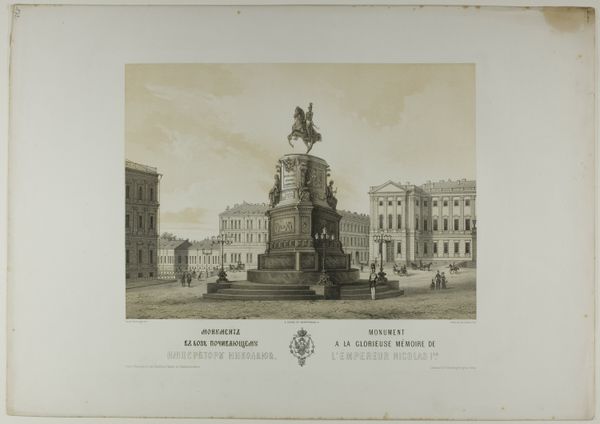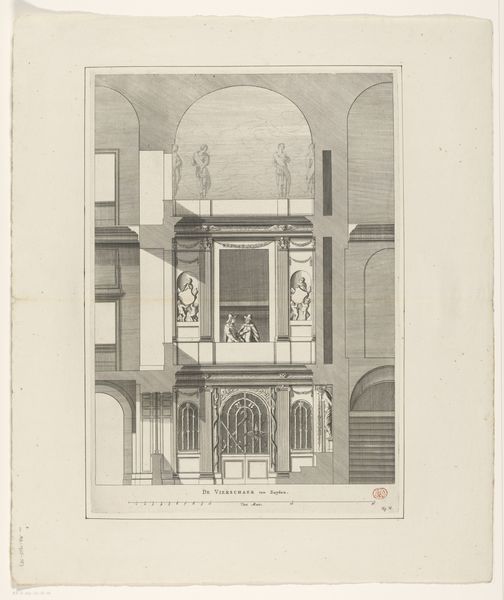
Zicht op de Fontaine du Palmier op de Place du Châtelet in Parijs 1820
0:00
0:00
jeanbaptistearnout
Rijksmuseum
print, etching
#
neoclacissism
# print
#
etching
#
old engraving style
#
landscape
#
column
#
cityscape
Dimensions: height 319 mm, width 244 mm
Copyright: Rijks Museum: Open Domain
Editor: This is "Zicht op de Fontaine du Palmier op de Place du Châtelet in Parijs," an etching by Jean-Baptiste Arnout from 1820. The towering column really dominates the composition; there's a sense of civic pride, but almost imposing. How do you interpret this work? Curator: Considering its context, this piece speaks volumes about power dynamics and social engineering. The Fontaine du Palmier, erected to commemorate Napoleon's victories, visualizes imperial ambition right in the heart of Paris. Do you notice how the monument dwarfs the surrounding buildings, subtly asserting dominance over the urban landscape? Editor: I see what you mean. It's almost like a declaration. Curator: Precisely! This wasn't just about celebrating military achievements; it was a strategic visual assertion of authority, influencing public perception and solidifying a particular political narrative within the city. Consider how Neoclassicism, as an artistic movement, served similar ideological purposes at the time. The column, referencing antiquity, evokes notions of imperial Rome and projects an image of enduring strength and stability. Editor: So, it's more than just a pretty cityscape print? Curator: Absolutely. By examining its symbolism and historical backdrop, we uncover the embedded power structures shaping the cityscape and collective memory. Can we see how architecture and urban planning become instruments for political messaging? What stories are being told and whose voices are amplified, while others are silenced? Editor: I hadn't considered the city itself as a kind of text. It's like the architecture becomes an extension of political rhetoric. It changes how I see cityscapes now. Curator: That's the essence of situating art within its social context. Hopefully you see, like I do, art is more than the sum of its aesthetic parts.
Comments
No comments
Be the first to comment and join the conversation on the ultimate creative platform.
